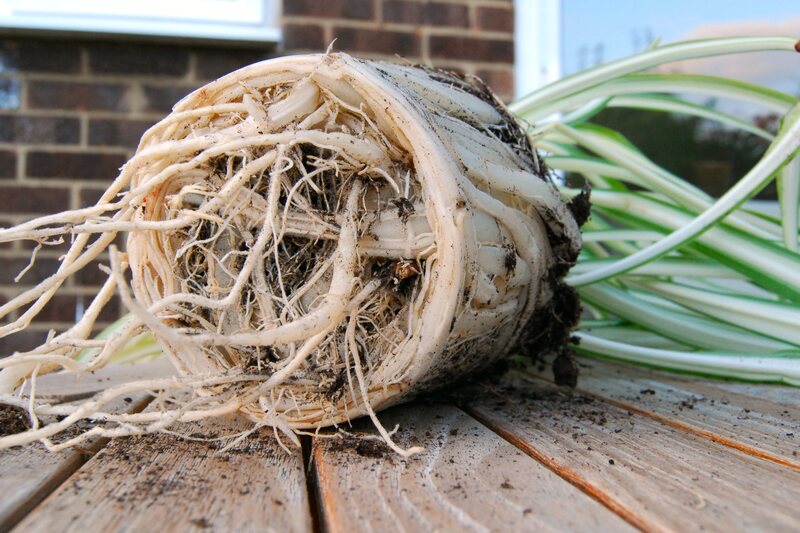Helping Your Lawn Thrive Through Summer Drought
Summer droughts can be devastating for homeowners who take pride in a lush, green lawn. As temperatures soar and rainfall diminishes, maintaining a healthy yard becomes a challenge. However, with the right strategies, you can help your lawn thrive during summer drought and preserve its beauty all season long. In this comprehensive guide, we'll explore expert tips and science-backed approaches to ensure your grass remains resilient, vibrant, and healthy even in the harshest conditions.
Understanding Drought Stress on Lawns
Before implementing solutions, it's vital to grasp how drought affects your lawn. When water is scarce, grass plants operate in a survival mode, reducing growth and sometimes becoming dormant to conserve moisture. Prolonged drought can lead to brown patches, thinning turf, increased weed invasion, and even permanent damage if not addressed promptly.
- Drought-stressed grass blades turn bluish-grey and wilt.
- Lawn growth slows or stops entirely during extended dry spells.
- Soil compaction and poor infiltration exacerbate water loss.
Key Signs Your Lawn Needs Water
- Footprints and mower tracks remain visible after walking or mowing;
- Grass doesn't spring back when gently tugged;
- Color fades from green to dull blue-grey or straw yellow.
Recognizing these symptoms early allows you to intervene before irreversible damage sets in.

Choosing the Right Grass for Drought Resilience
Grass species selection is one of the most impactful decisions for maintaining a lawn through summer drought. Certain types are naturally more tolerant of heat and dry conditions:
- Bermuda Grass - Excellent drought tolerance, thrives in full sun, recovers quickly.
- Zoysia Grass - Dense, deep roots; signals dormancy then greens up rapidly after rain.
- Buffalograss - Low maintenance, survives with minimal water, suited for warm climates.
- Tall Fescue - Cool season grass with deep roots for improved drought resistance.
If you're establishing a new lawn or renovating an old one, opt for blends and cultivars specially labeled as "drought tolerant" or "water efficient grass." This gives your yard a strong foundation for surviving dry conditions.
Watering Techniques for Drought-Proof Lawns
Create a Deep Root System
Healthy lawns survive drought by developing deep, extensive root systems. Shallow, daily watering actually harms grass by encouraging roots to stay near the surface, increasing susceptibility to heat and evaporation. Instead, water less frequently but more deeply:
- Water early in the morning (before 9 AM) to reduce evaporation and fungal risk.
- Apply 1 to 1.5 inches of water per week, split between one or two deeply soaking sessions.
- Allow the soil to dry slightly between watering to encourage deep root growth.
- If watering restrictions exist, prioritize essential areas and skip non-lawn spaces like footpaths or borders.
Soil Moisture Management
Use a screwdriver, soil probe, or moisture meter to measure how deeply water penetrates the soil. Ideally, it should reach 6-8 inches deep. Adjust your irrigation schedule to achieve this without runoff or puddling. Efficient irrigation conserves water while strengthening the grass's drought resistance.
Improve Lawn Health with Mulching and Soil Amendments
Mulch Mowing: The Secret to Moisture Retention
Returning grass clippings to your lawn ("mulch mowing") is an effective way to insulate soil, reduce surface evaporation, and recycle nutrients. Use a mulching mower and leave clippings no longer than 1". Over time, this organic matter (natural mulch) builds healthier soil that holds water more efficiently.
Soil Quality Matters
The right soil is the foundation for drought-hardiness:
- Loamy soils retain water while draining excess efficiently.
- Clay soils may compact; regular core aeration relieves compaction and increases root penetration.
- Sandy soils dry quickly; adding compost increases water retention.
Test your soil's fertility and structure every 2-3 years. Amend poor soils with organic matter such as compost, leaf mold, or well-rotted manure to enhance drought resilience.
Mowing Strategies to Beat the Heat
During dry periods, your mowing habits can either help or harm your lawn:
- Set mower blades higher (3-4 inches) to shade the soil and reduce water loss.
- Never remove more than one-third of the grass blade in a single mow - this prevents shock and preserves root reserves.
- Sharpen blades regularly for clean cuts, lowering stress and disease risk.
- Skip mowing altogether when the lawn is dormant or extremely dry, as grass needs time to recover.
Remember: Longer blades help grass roots become deeper and more drought-tolerant!
Fertilizer and Lawn Care During Drought
Timed Fertilizer Applications
Fertilizing during a drought can do more harm than good. Additional salts in fertilizers may burn the lawn, especially when moisture is scarce. Instead:
- Apply fertilizers in late spring or early autumn - before/after peak drought.
- Avoid "quick green up" products that can stress lawns further.
- If you must fertilize, use slow-release or organic products, and always lightly water them in.
Manage Lawn Pests and Diseases
Weakened, water-stressed grass is more vulnerable to pests (like grubs or chinch bugs) and diseases (fungus, brown patch). Monitor your lawn regularly and address any issues with targeted, lawn-safe solutions. Avoid unnecessary pesticide use, as it may intensify stress.
Sustainable Lawn Maintenance Practices
Embrace Smart Irrigation Technology
Investing in automated irrigation systems with soil moisture sensors, drip lines, or smart timers ensures water is used efficiently. Some systems even adjust watering schedules based on local weather data, preventing unnecessary watering during rainfall or cooler periods.
- Check sprinkler heads regularly for leaks or malfunction;
- Use soaker hoses for targeted, deep root watering;
- Group plants with similar water needs together (hydrozoning).
Reduce Lawn Size, Increase Resilience
Consider converting the least-used or difficult-to-water areas of your yard into planting beds filled with drought-tolerant perennials, native grasses, or ornamental groundcovers. This reduces water consumption and creates habitat for pollinators and beneficial insects.
Seasonal Lawn Care Calendar for Drought Survival
Here's a month-by-month guide to optimizing your drought lawn care routine:
- Early Spring: Aerate compacted soil, topdress with compost, overseed with drought-tolerant species.
- Late Spring: Apply slow-release fertilizer, begin deep and infrequent watering schedule.
- Summer: Mow high, mulch-mow, increase irrigation only as needed to sustain roots, watch for pests/disease.
- Early Autumn: Repair any stress damage, overseed as necessary, fertilize for root development.
- Winter: Remove debris; let dormant grass rest and recover.
Frequently Asked Questions About Drought Lawn Care
Should I let my lawn "go dormant" during summer drought?
Most established lawns, especially those grown with drought-tolerant species, can safely "rest" in dormancy for up to 6 weeks. During this time, minimize foot traffic and apply just enough water (about 1/2 inch every 2-3 weeks) to keep the roots alive.
Can brown grass recover after drought?
In most cases, dormant grass greens up quickly when regular watering resumes. However, if the crown (the base of the plant) remains firm and white, your lawn is alive. If it turns mushy or brown, that section may need reseeding or repair.
Is watering my lawn at night effective?
Watering at night encourages disease due to prolonged leaf wetness. Always water early in the morning for best results.

Eco-Friendly Solutions: Going Beyond the Lawn
For long-term climate adaptation, try integrating rain barrels, bioswales, and permeable paving into your landscape. These features help capture and use every drop of rain, reduce runoff, and build a more resilient, sustainable yard. Also, advocate for local ordinances that support native, drought-resistant landscaping in your community.
Conclusion: Your Best Defense Against Summer Drought
Helping your lawn beat drought is about more than simply watering. By choosing the right grass species, improving soil health, using smart irrigation, and adopting responsible lawn care, you can enjoy a verdant and resilient yard even in tough summers. With these strategies, not only do you save water and money - you also create a landscape that's beautiful, sustainable, and better for our planet.
Remember: Healthy lawns start well before drought strikes. Plan ahead and nurture your turf now to reap the rewards all season long!